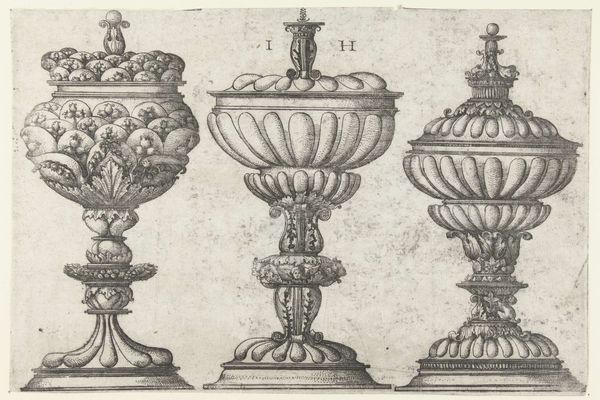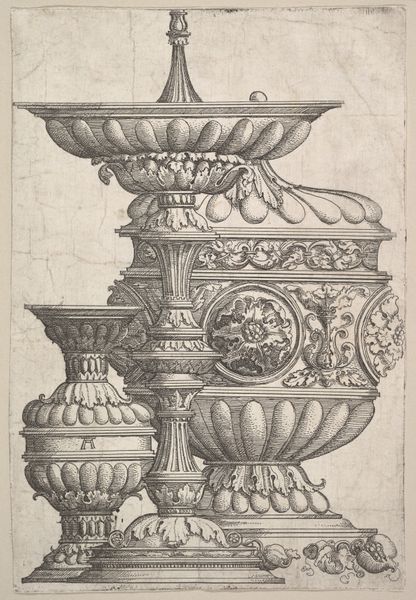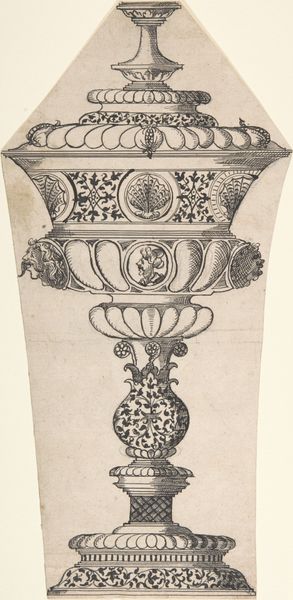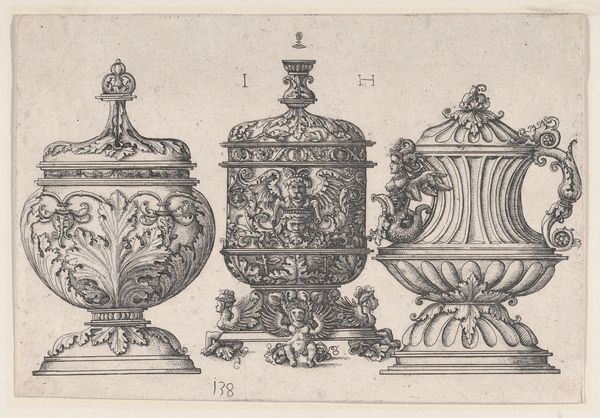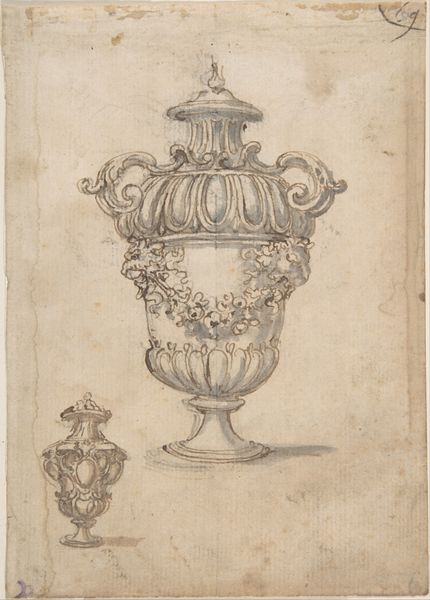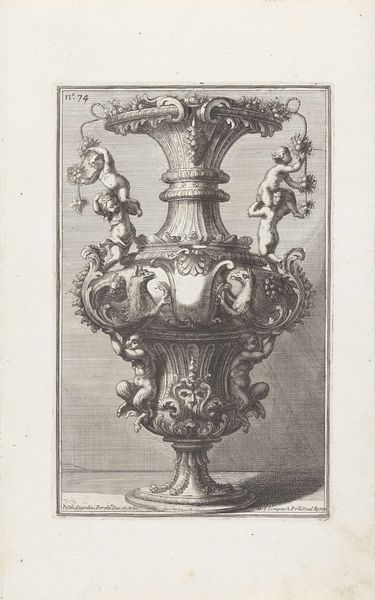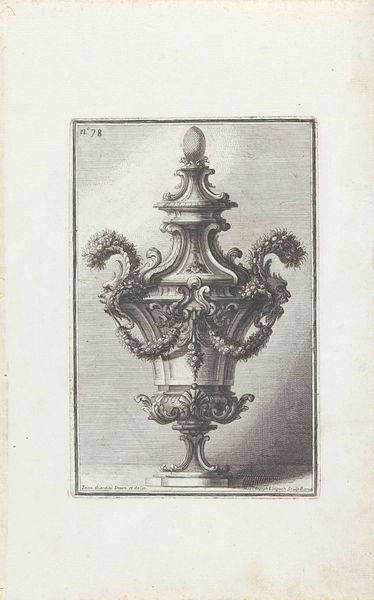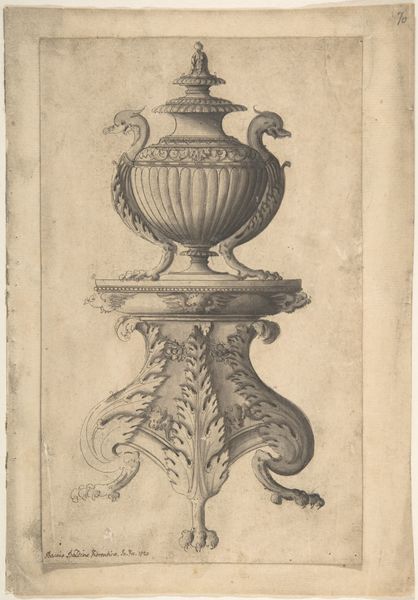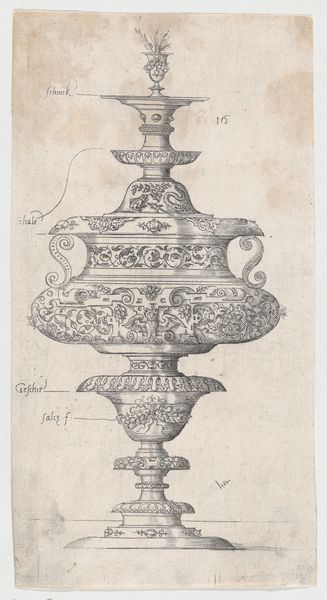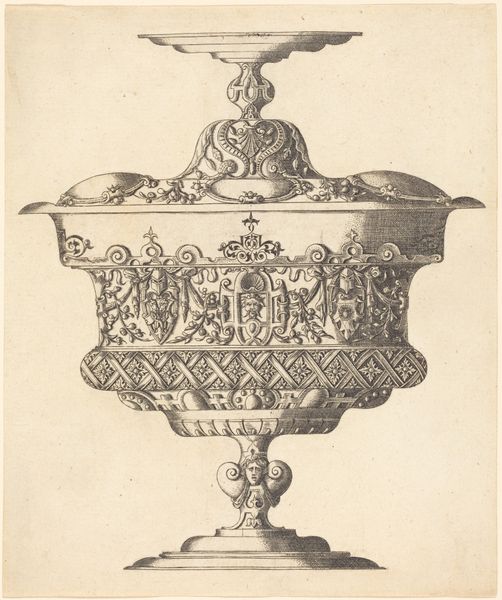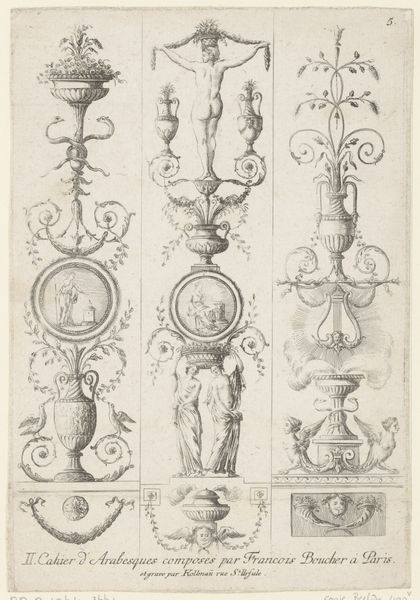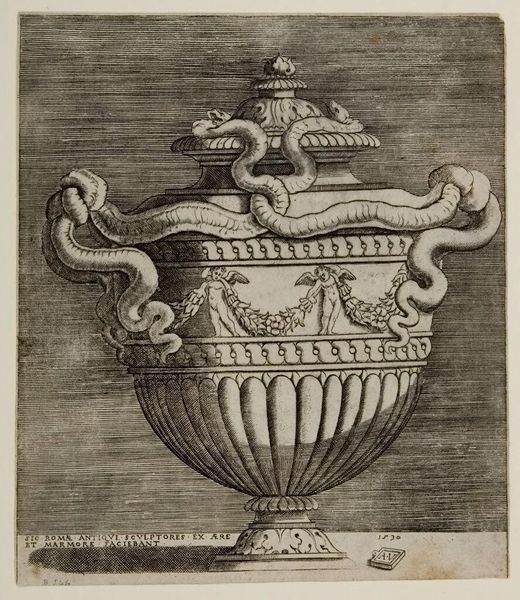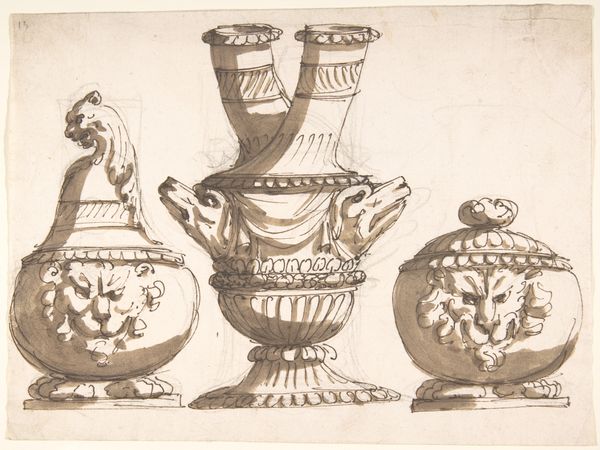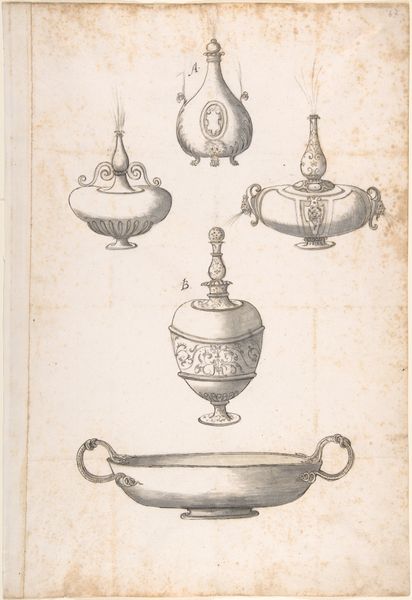
drawing, print, engraving
#
drawing
#
ink drawing
#
pen drawing
# print
#
form
#
11_renaissance
#
line
#
engraving
Dimensions: sheet: 11 3/8 x 8 1/2 in. (28.9 x 21.6 cm)
Copyright: Public Domain
Curator: Here we have Hieronymus Hopfer’s engraving "Three Vessels," likely created between 1505 and 1570. Look closely at the artist’s masterful control of line. Editor: Immediately, I'm struck by the sheer ornateness. It's dripping with the aesthetics of luxury. These aren't everyday objects. They speak to a culture obsessed with elaborate display. Curator: The composition guides us. The confident lines establish form through hatching and cross-hatching. The foreground is grounded, establishing stability to offset the delicate intricacies above. It elegantly contains the overall composition. Editor: Exactly! I want to know what processes yielded this level of detail. Each curve, each leaf seems hand-rendered. These vessels communicate not just wealth, but intense skilled labor involved in their fabrication, making you wonder: who would be designing these objects? Curator: Indeed, each vessel, while sharing a similar visual language, displays unique ornamentation. There’s a visual dance here, where repeated forms meet variation—line balancing contrast and harmony. Editor: And the line must have derived from some materiality that has real weight. Consider the mines where the ore comes from, how the object itself goes through melting and pouring, cutting, shaping, polishing; you can feel all those processes by following each carefully articulated form. This brings up questions of status but also questions of accessibility. Was Hopfer commenting on material disparities? Curator: I appreciate that angle. The rigorous symmetry certainly gives these forms an ideal presence—platonic, almost. I interpret that precision less as class commentary and more as aspiration toward the ideal form. The arrangement promotes harmony through visual language. Editor: Perhaps both exist at once? The very notion of the ‘ideal’ in this period becomes entwined with material excess. The rising merchant class are certainly trying to buy these perfect ideas...I mean...objects. The labor of it all feels obscured and yet inescapable. Curator: Ultimately, the composition and rendering give these commonplace objects artistic reverence, wouldn't you say? Editor: Yes, an everyday object, imbued with this weight of labor, class aspiration, and even ideal beauty. Curator: It gives much to think about, doesn’t it? Editor: Definitely. Thank you for calling attention to Hieronymus Hopfer’s artistry.
Comments
No comments
Be the first to comment and join the conversation on the ultimate creative platform.
